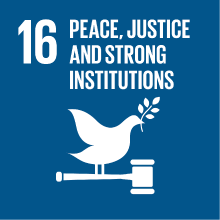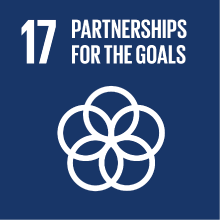THE CITY IN THE ISLAMIC WORLD
- Academic year
- 2023/2024 Syllabus of previous years
- Official course title
- LA CITTÀ NEL MONDO ISLAMICO
- Course code
- LM2210 (AF:444444 AR:248732)
- Teaching language
- Italian
- Modality
- On campus classes
- ECTS credits
- 6
- Degree level
- Master's Degree Programme (DM270)
- Academic Discipline
- L-OR/11
- Period
- 2nd Semester
- Course year
- 1
- Where
- VENEZIA
- Moodle
- Go to Moodle page
Contribution of the course to the overall degree programme goals
Expected learning outcomes
Pre-requirements
Contents
The legacy of traditions and innovations (e.g., the abandonment of the orthogonal model, the introduction of the citadel) will be discussed in the context of major political, economic, social and cultural changes, and an attempt will be made to identify a semiotics of urban and domestic space specific to Islamic societies. A part of the course will be devoted to the study of a great capital, Cairo, from its foundation to the present day; the course will then address the study of other cities caught in specific moments of their history and chosen in relation to the different contribution they make to the theme tackled: Dubai (the "Islamic city" recreated), Palermo (in search of the "Islamic city"), Cordoba (the "Islamic city" rediscovered), Istanbul (the Ottoman creation of the "Islamic city"), Jaffa (the "Islamic city" erased).
The course will also deconstruct the concept of the 'Islamic city' from the 19th century Orientalist view to its contemporary formulations. The contrast between the 'Islamic city' and the 'colonial city' will also be discussed.
Referral texts
J. Abu-Lughod, The Islamic City: Historical Myth, Islamic Essence, and Contemporary Relevance, International Journal of Middle East Studies 19 (2) 1987, pp. 155-176 (pdf)
M. Apaydin, Islamic city: a rhetorical argument or a political tool?, Al-Machriq V. 89/1, 2015, pp. 313-328 (pdf)
G.Avni, “From Polis to Madina” Revisited – Urban Change in Byzantine and early Islamic Palestine, JRAS, Series 3, 21, 3 (2011), pp. 301–329 (pdf) – one city of choice
J.L. Bacharach, The court-citadel: an Islamic urban symbol of power, in Urbanism in Islam III, Tokyo 1989, pp. 206-245 (pdf)*
A. Bagnera, Lo sviluppo urbano di Palermo in età islamica: nuovi punti di osservazione, in L. Arcifa, M. Sgarlata (a cura di), From Polis to Madina. La trasformazione delle città siciliane fra Tardoantico e Altomedioevo, Bari 2020, pp. 313-328 (pdf)
A. Bagnera, “…wa hiya qaṣaba Ṣiqilliyati.” La città di Palermo in età kalbita: note per una rilettura dell’aggregato urbano tra metà X e metà XI secolo, in L. Arcifa, C. Rognoni (a cura di), La Sicilia e il Mediterraneo fra Tardoantico e Medioevo. Atti del Convegno Internazionale di studi dedicato a Fabiola Ardizzone Lo Bue, Palermo 2022, pp. 207-237(pdf)
D. Behrens-Abouseif, S. Denoix, J.-Cl. Garcin, Le Caire, in Grandes villes méditerranéennes du monde musulman médiéval, Roma, 2000, pp. 177-203 (pdf)*
D. Behrens-Abouseif, The Mamluk City, in AAVV, The City in the Islamic World, Leiden and Boston 2008, pp. 295-316 (pdf)
P. Cuneo, Storia dell’Urbanistica: Il mondo Islamico, Bari, 1986, pp. 368-378 (pdf)
D. Haider, The growing pains of Dubai: a city in search of its identity, in AAVV, The city in the Islamic World, Leiden and Boston, 2008, pp. 1063-1084 (pdf)
H. Inalcik, Istanbul, EI2: paragraphs 2-5 (pdf)
R. Kark, The Traditional Middle Eastern City: The Cases of Jerusalem and Jaffa during the Nineteenth Century, Zeitschrift des Deutschen Palästina-Vereins Bd. 97.1 (1981), pp. 93-108 (pdf)*
R. Kark, Ottoman Jaffa: from Ruin to Central City in Palestine, in AAVV, The History and Archaeology of Jaffa I, Los Angeles 2012, pp. 129-130 (pdf)
H. Kennedy, From Polis to Madīna revisited: Some Reflections Thirty Years On (2018) (file word) https://books.openedition.org/cvz/23597
D. Kuban, Istanbul, an Urban History, Istanbul, 2010 (library)*
F. Micheau, Baghdad in the Abbasid era: a cosmopolitan and multi-confessional capital, in AAVV, The city in the Islamic world, 2008, pp. 221-248 (pdf)*
M. Mourad, Heliopolis, Egypt: politics of space in occupied Cairo, The Funambulist 10, 2017 (pdf)
K. Olroyd-Robinson, The urban architecture of al Bastakiyyah, in Salma Samar Damluji (ed.) The architecture of the Arab United Emirates, Reading (UK) 2006, pp. 179-196 (pdf)
S. Pradines, Les murailles du Caire, de Saladin à Napoléon, CRAI 2012/II, pp. 1027-1063 (pdf)*
S. Pradines, Archaeological Excavations of Bāb al-Ghurayb Cemetery: Plague Epidemics and the Ruin of Fourteenth-Century Cairo, in Mamluk Studies Review XXIV (2021), pp. 119-170 (pdf)*
A. Raymond, Le Caire, Paris 1993 (library)*
Sh. Rotbard, White City, Black City. Architecture and War in Tel Aviv and Jaffa, London 2015: selected chapters (pdf)*
A.F. Sayyed e R.-P. Gayraud, Fustat-Le Caire à l’époque fatimide, in Grandes villes méditerranéennes du monde musulman médiéval, Roma 2000, pp. 135-156 (pdf)*
S. Vicari, Che cosa è la città, Dispensa di Sociologia, Milano Bicocca (pdf)
S. Yerasimos, Istanbul, VIII. Monuments, EI2 supplementts(pdf)*
A. Walmsley, Urbanism at Islamic Jerash: new readings from archaeology and history, in Achim Lichtenberger, Rubina Raja (eds) The archaeology and history of Jerash, Turnhout (Brepols), 2018, pp. 241-256 (pdf)*
Assessment methods
A. 35% of final mark
The student is required to submit an essay (3500-5000 words) at least one week before the day of the oral examination, on a city of his/her choice with the previous agreement of the teacher.
In this work the student will have to show that he/she has acquired the necessary critical skills and tools to face the study of a city in the Islamic world, and to define its characteristics in relation to the interpretative models that had been proposed.
B) 65% of final mark
At the oral examination the student will be required to illustrate the topics treated in the course of the lectures, with the help of images.
This part of the exam aims to verify that the student has acquired a basic knowledge of the history of the studies, of the development of the four capitals examined in detail and about the main problems related to them.
Type of exam
Teaching methods
Further information
2030 Agenda for Sustainable Development Goals
This subject deals with topics related to the macro-area "International cooperation" and contributes to the achievement of one or more goals of U. N. Agenda for Sustainable Development


